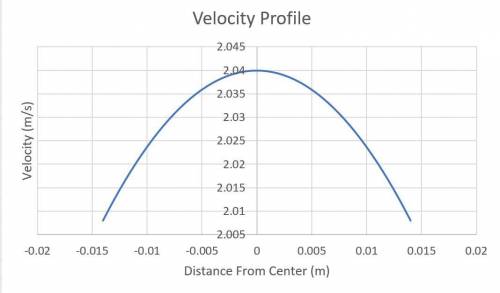
Physics, 18.03.2021 01:10, hipstersale4913
Your heart pumps blood into your aorta (diameter 2.5 cm) with a maximum flow rate of about 500 cm^3/s. Assume that blood flow in the aorta is laminar (which is not a very accurate assumption) and that blood is a Newtonian fluid with a viscosity similar to that of water.
a. Find the pressure drop per unit length along the aorta. Compare the pressure drop along a 10 cm length of aorta to atmospheric pressure (105 Pa).
b. Estimate the power required for the heart to push blood along a 10 cm length of aorta, and compare to the basal metabolic rate of 100 W.
c. Determine and sketch the velocity profile across the aorta (assuming laminar flow). What is the velocity at the center

Answers: 3
Other questions on the subject: Physics


Physics, 22.06.2019 13:30, Albertrami9019
Física: un futbolista patea hacia el arco con una velocidad de 15m/ah, calcular: a)el alcance para un ángulo de tiro de 25º, b) el tiempo que el balón permanece en el aire.
Answers: 1

Physics, 22.06.2019 19:00, bradleycawley02
What is the gravitational attraction between a dating couple whose centers of mass are 0.630 m apart if the boy weighs 715 n and the girl weighs 465 n?
Answers: 3

Physics, 22.06.2019 20:00, dee6991
Abumper car with a mass of 250 kg is traveling at a speed of 4 m/s. this bumper car collides and sticks to a second bumper car with a mass of 250 kg, which is initially at rest. what is the final speed of these two bumper cars after the collision, assuming they remain stuck together?
Answers: 1
Do you know the correct answer?
Your heart pumps blood into your aorta (diameter 2.5 cm) with a maximum flow rate of about 500 cm^3/...
Questions in other subjects:



Social Studies, 17.12.2020 21:20


Mathematics, 17.12.2020 21:20

Mathematics, 17.12.2020 21:20

Mathematics, 17.12.2020 21:20


Social Studies, 17.12.2020 21:20




 = 10⁵ Pa, we have;
= 10⁵ Pa, we have;
 = The velocity at the center
= The velocity at the center
![v(r) = v_m \cdot \left[1 - \dfrac{r^2}{R^2} \right]](/tpl/images/1195/7598/80a86.png)
![v(r) = 2.04 - \dfrac{2.04 \cdot r^2}{0.0125^2} \right] = 2.04 - 163\cdot r^2](/tpl/images/1195/7598/e42d7.png)





